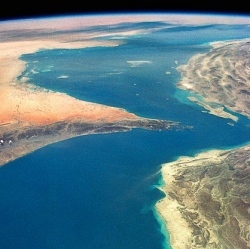
Carbon is the key ingredient for all of the life on our planet. But how Earth acquired its "volatile elements" – which have low boiling points – such as carbon and sulphur remains a subject of some debate. A team now argues that a collision between Earth and an embryonic planet like Mercury could provide the answer.
Details of the work appear in the journal Nature Geoscience. "The challenge is to explain the origin of the volatile elements like carbon that remain outside the core in the mantle portion of our planet," said Rajdeep Dasgupta, a co-author of the study from Rice University in Houston, Texas.
According to a widely accepted idea called the Late Veneer Hypothesis, Earth formed from material that was largely devoid of volatiles. These elements, such as carbon, sulphur, nitrogen and hydrogen, were added later on by space rocks after Earth’s core had finished forming.
"Any of those elements that fell to Earth in meteorites and comets more than about 100 million years after the Solar System formed could have avoided the intense heat of the magma ocean that covered Earth up to that point," said Yuan Li, from the Guangzhou Institute of Geochemistry at the Chinese Academy of Sciences.
"The problem with that idea is that while it can account for the abundance of many of these elements, there are no known meteorites that would produce the ratio of volatile elements in the silicate portion of our planet."
The group had previously published papers showing that if even if carbon had not vaporised into space when the planet was largely molten, it would have ended up in the metallic core of our planet – because the iron-rich alloys there have a strong affinity for carbon.
But if this is the case, where did the carbon in the mantle and biosphere come from? The team used laboratory experiments that can recreate the high-pressure and high-temperature conditions that exist deep inside Earth and other rocky planets.
The found that one scenario that could reconcile the discrepancies in the carbon-to-sulphur ratio and carbon abundance was an embryonic planet like Mercury colliding with and being absorbed by Earth, early in its history.
"Because it’s a massive body, the dynamics could work in a way that the core of that planet would go directly to the core of our planet, and the carbon-rich mantle would mix with Earth’s mantle," said Dr Dasgupta.
